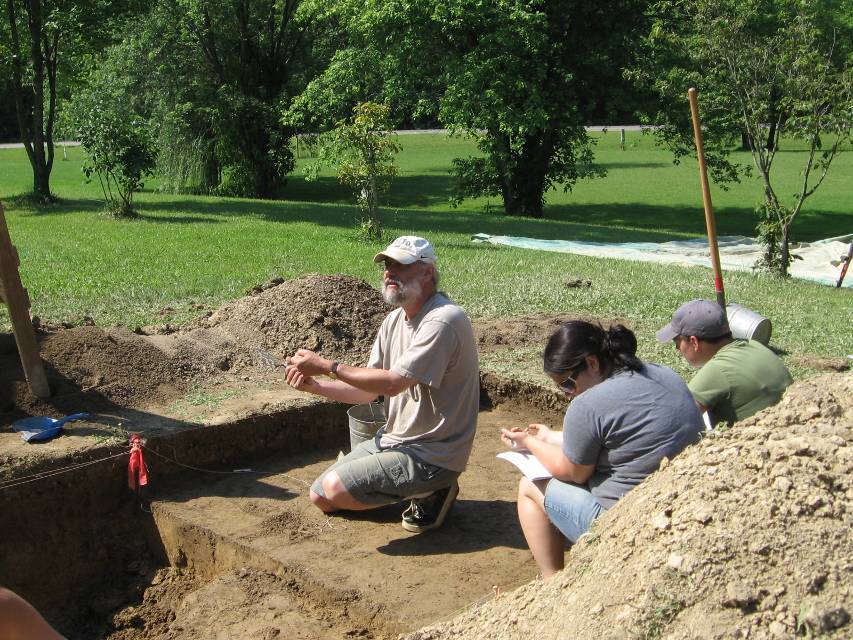Archaeology is more than digging up artifacts. Archaeologists want to understand the world in which those artifacts were made and used. So, in addition to digging up pottery sherds and stone tools we also look for clues that could tell us what the environment was like for the people who made those objects. Animal bones, charred seeds, pollen grains, and other traces of the natural world that can be preserved in an archaeological site are called ecofacts, or sometimes biofacts. They may not seem as exciting as golden idols or Clovis points, but they are hugely important for what they can tell us about the problems those artifacts were created to solve. In my June column for the Columbus Dispatch I consider how archaeologists have used ecofacts to reconstruct ancient environments in Egypt and Athens County, Ohio in order to gain an understanding of how changes in climate resulted in corresponding changes in the ways of life of the people living in these regions.

Dr. Abrams instructing students from Ohio University on proper excavation techniques at the Patton site, a ancient village site located about 50 yards from the Patton bog.
Ohio University archaeologist Dr. Elliot Abrams, one of the scientists whose research is featured in the column, shared the following thoughts with me regarding the importance of understanding the environmental context of the ancient cultures we study.
“From the deep archaeological past to the modern world, societies have always taken into account the characteristics of the natural environment when creating their own economic system. Yet we know that change is constant, and when those environmental characteristics significantly change, economies must adjust accordingly. Archaeologists have a unique opportunity to empirically document these long-term changes in the context of both the society, based on such materials as artifacts and housing, and the natural environment, based on food remains and pollen profiles. The importance of this type of archaeological research lies in its ability to unlock the scale and rate at which changes occurred and to better understand how people collectively responded to those changes. In effect, ecologically-oriented archaeological research links the challenges of the past with those of the present.” In the accompanying image, Dr. Abrams is instructing students from Ohio University on proper excavation techniques at the
Patton site, the remains of a small village in Athens County occupied by American Indians at around A.D. 100. The site is about 50 yards from the Patton bog, a cattail-covered wetland that yielded a pollen record from which Abrams and his colleagues were able to document environmental changes that changed the lives of the Patton site villagers. For further reading Abrams, Elliot M. and AnnCorrine Freter 2005
The Emergence of the Moundbuilders: the archaeology of tribal societies in southeastern Ohio. Ohio University Press, Athens. Fagan, Brian 2008
The Great Warming: climate change and the rise and fall of civilizations. Bloomsbury Press, New York. Brad Lepper
